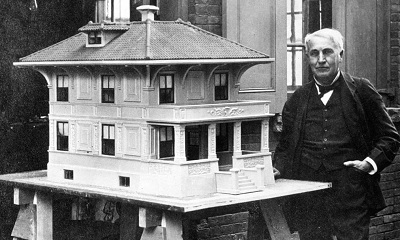 Tuesday, April 30, 2024
Tuesday, April 30, 2024  Tuesday, April 30, 2024
Tuesday, April 30, 2024 
As blogged on The Guardian, unlike the Pantheon … virtually all the concrete structures one sees today will eventually need to be replaced,” writes Robert Courland is his weighty tome Concrete Planet, “costing us trillions of dollars in the process.”
While there is some debate over when and where the first concrete was used – the Göbekli Tepe temple in modern-day Turkey was built using T-shaped pillars of carved limestone approximately 12,000 years ago, desert traders used early concrete to make underground water cisterns 8,000 years ago, and the ancient Egyptians used gypsum and lime to make mortars – there is little dispute that the first people to use concrete in the way we do today were the Romans.
The key to its longevity appears to be the use of volcanic ash, or pozzolana. Where modern concrete is a mix of lime-based cement, water, sand and an aggregate such as gravel, the recipe for concrete set down by architect Vitruvius in the first century BC involved pozzolana and chunks of volcanic rock, known as tuff. When it comes to Roman marine concrete, used to construct piers and breakwaters, research published in 2017 found that the addition of sea water actually strengthened these structures over time, making them harder and harder over the millennia.
The most striking surviving example of Roman concrete is the Pantheon, which the painter Michelangelo described as an “angelic and not human design”. It still looks strikingly modern today and it remains the largest non-reinforced concrete dome in the world, 19 centuries after it was built.
With only a couple of isolated exceptions, around 1,400 years passed after the fall of the western Roman empire until concrete was used again on any great scale.
The invention of reinforced concrete gave the material a new life. It was pioneered in France in the mid-19th century, but was popularised by California-based engineer Ernest Ransome, who poured over iron (and later steel) bars to improving its tensile strength.
Keep reading this blog in The Guardian
Watch the video and learn more about Construction Links Network – the peer-to-peer network sharing platform for the construction, building and design community.
Ideal for YOUR Press Releases | Project Updates | New Appointments | Awards & Milestones | Company News | New Products/Services | Brochures | Videos | Infographics | Blog Sharing | Events and More